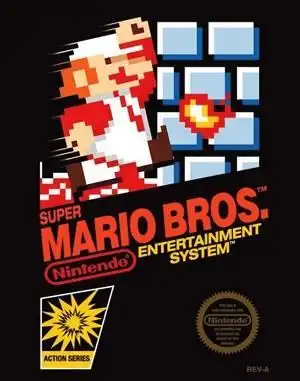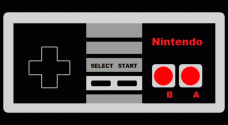Remember the first time you heard that iconic coin sound? Or the frantic dash to reach the flagpole before time ran out? For millions, that memory is tied directly to Super Mario Bros., the game that didn't just define a console, but arguably saved an entire industry. Released in 1985 for the Nintendo Entertainment System (NES), this seemingly simple side-scrolling adventure became a cultural phenomenon, and its magic hasn't faded one bit.
The Magic of the Original: 1985's Masterpiece
Forget complex tutorials and sprawling open worlds for a moment. The brilliance of the original Super Mario Bros. lay in its elegant simplicity and genius design.
Simple Controls, Deep Challenge
You moved left and right, you jumped, and you held a button to run faster or shoot fireballs. That was it. Yet, within these basic actions lay a world of challenge. The game masterfully taught you its rules without text boxes. Goombas taught you to jump. Question Blocks taught you to hit things from below. Pipes hinted at secrets. It was intuitive, yet incredibly difficult, demanding precision and timing.
This difficulty wasn't accidental. Like its arcade predecessors, Super Mario Bros. was designed to be challenging, encouraging repeated plays to master its levels and mechanics. Every death was a lesson learned, pushing you to get just a little bit further next time.
Iconic World and Enemies
From the moment you step out of that pipe in World 1-1, you're immersed in a vibrant, unforgettable world. The bright blue skies, the green hills, the brown blocks – it's instantly recognizable. And the inhabitants?
- Goombas
- Koopa Troopas
- Piranha Plants
- Hammer Bros.
- And of course, the King of the Koopas himself, Bowser!
These characters and settings became ingrained in pop culture, forming the foundation for decades of adventures to come.
The Birth of a Legend
Developed by Shigeru Miyamoto and Takashi Tezuka, Super Mario Bros. wasn't just a fun game; it was a revolutionary one. It set standards for platforming games, level design, and even narrative (save the princess!). Its massive success pulled the video game industry out of a slump and cemented Nintendo's place as a global leader. It wasn't just a game; it was a landmark event.
Why It Still Holds Up Today
Decades later, why do we still talk about and play Super Mario Bros.?
- Timeless Design: The core mechanics are so solid, they still feel good to play. Jumping feels right, running feels fast. It's pure, unadulterated platforming fun.
- Perfect Pacing: The levels are short, sweet, and packed with variety, secrets, and increasing challenges.
- Nostalgia Power: For many, it's a direct link to childhood, sparking warm memories of blowing on cartridges and crowding around the TV.
- Speedrunning Haven: Its precise mechanics and numerous glitches/secrets make it a favorite for the speedrunning community, constantly finding new ways to break the game and shave off milliseconds.
Reliving the Adventure: How to Play Now
Feeling the itch to stomp some Goombas? Luckily, Nintendo knows how much we love this classic.
- Nintendo Switch Online: The easiest official way is through the NES library available with a Nintendo Switch Online subscription. You can play it on your modern console with added features like save states and rewind.
- Game & Watch: Super Mario Bros.: Nintendo released a special commemorative handheld device that includes the original game (and The Lost Levels!), offering a dedicated, retro-style experience.
- Emulation: For the technically inclined, emulators allow you to play ROMs of the game on various devices. While often used, the legality of ROMs can be murky; typically, the common advice is to only use ROMs you've created from physical copies you own.
The Legacy Continues
Super Mario Bros. wasn't the end; it was just the beginning. Its success spawned countless sequels, spin-offs, and appearances across every Nintendo console. Games like Super Mario Bros. 2 (the Western version), Super Mario Bros. 3, and the jump to 16-bit with Super Mario World built upon the foundations laid by the 1985 original, introducing new power-ups, characters, and mechanics that continued to push the genre forward.
But no matter how many stars Mario collects or how many kingdoms he saves, it all started with that first jump, that first coin, and that first trip down a pipe. The simple, perfect world of Super Mario Bros. remains a fundamental piece of gaming history and a cherished memory for generations.
FAQ
Q: What year was the original Super Mario Bros. released? A: The original Super Mario Bros. was released in 1985 for the Famicom (Japan) and later the Nintendo Entertainment System (NES) in North America and other regions.
Q: Is Super Mario Bros. considered a difficult game? A: Yes, compared to many modern games, the original Super Mario Bros. is known for its challenging difficulty, limited lives, and lack of save points, reflecting its arcade roots.
Q: Can I play the original Super Mario Bros. on modern consoles? A: Yes, you can play Super Mario Bros. officially through the Nintendo Switch Online service. It was also included on the NES Classic Edition mini-console and the special Game & Watch: Super Mario Bros. handheld.
Q: Who developed Super Mario Bros.? A: Super Mario Bros. was developed by Nintendo R&D4, led by Shigeru Miyamoto and Takashi Tezuka.


